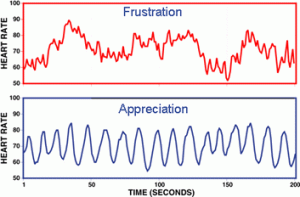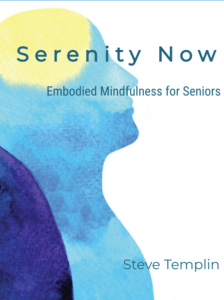Did you know that your heart is more than a pump and in fact has its very own ‘brain’?
Your heart consists of about 70% neurological tissue and has a profound influence on your entire biochemistry and even influences how you heal physically as well as emotionally. The emerging science of neuro-cardiology is shinning a bright light on the healing wisdom of our own hearts and bodies.
Unfortunately, most of us have been conditioned to live in our heads … thinking, analyzing, and worrying … and cut off from the healing capacity of the heart.
Did you know that with practice you can train your heart to positively influence your immune system, cognition, and mood? The benefit of activating this ‘heart intelligence’ is that you’re helping your body shift into a healing mode. From a scientific point of view you’re balancing your autonomic nervous system … which is in control of most of your biochemistry.
And you can do all of this without a medication, special diet, or a healing remedy.
What is Heart Rate Variability?
Heart Rate Variability (HRV) is a measurement of the variable nature of your heartbeat.
A heartbeat that reflects autonomic nervous system balance beats incrementally faster and then incrementally slower in a very predictable pattern. On the other hand, a heart that beats out a monotonous pattern like a metronome, is a sign of low heart rate variability and reflects system wide distress. Low heart rate variability is both a reflection of disease states, and a contributor to disease.
The point here is that the HRV measurement tells us whether or not your system is operating in a resourceful, healing mode, or in a stress-induced, disease producing mode.
The top half of the chart below shows an HRV pattern reflecting an active stress response and its harmful implications for your health. The bottom graph is a highly coherent HRV pattern reflecting inner safety and an enhanced capacity for healing.
How Do we Learn to Increase Heart Rate Variability?
In my personal experience, the most accessible and dependable tool for increasing HRV and the health benefits it confers is the Quick Coherence technique that was developed at the Institute of HeartMath. You can learn more about this technique and its implications for your health at my website at www.newmedicalmodel.com.
Proven Benefits of High Heart Rate Variability
- Enhanced Gene Expression
- Increased Immune Function
- Improved Cognitive Performance
- Adrenal Gland Repair
- Increased DHEA
- Enhanced Emotional Resiliency
- Decreased Inflammation
- Blood Pressure Normalization
- Decreased Anxiety
- Enhanced Detoxification Capacity
- Overall Enhanced Healing Capacity
One of the most profound benefits of the science surrounding HRV is that we can finally confirm in an objective manner the body’s unparalleled capacity for self-healing.
Steven Templin, D.O.M., Dipl. Ac., is a Doctor of Oriental Medicine and nationally certified acupuncturist, specializing in Self-Regulation Training (to resolve the omnipresent stress-induced component of illness), Energy Medicine, Mind-Body Medicine, and Diet and Nutrition to repair the Gut-Immune-Brain Axis.
Templin, D.O.M., Dipl. Ac., is a Doctor of Oriental Medicine and nationally certified acupuncturist, specializing in Self-Regulation Training (to resolve the omnipresent stress-induced component of illness), Energy Medicine, Mind-Body Medicine, and Diet and Nutrition to repair the Gut-Immune-Brain Axis.
In his Self-Regulation training program he shares the science and most importantly the effective practices for transforming physical health and emotional well-being. Self-Regulation practices will greatly enhance the effectiveness of other therapeutic interventions, like diet and lifestyle modifications.
He teaches and consults online, and sees patients at the Natural Medicine Center in Lakeland, Florida. You can learn more about Dr. Templin and his healing program by visiting www.stevetemplin.com.


 Steve is a retired Doctor of Oriental Medicine, Acupuncture Physician, and HeartMath Trauma-Sensitive Certified Practitioner with over 35 years of clinical experience in the fields of Energy Medicine, Energy Psychology, and Biofeedback.
Steve is a retired Doctor of Oriental Medicine, Acupuncture Physician, and HeartMath Trauma-Sensitive Certified Practitioner with over 35 years of clinical experience in the fields of Energy Medicine, Energy Psychology, and Biofeedback. 